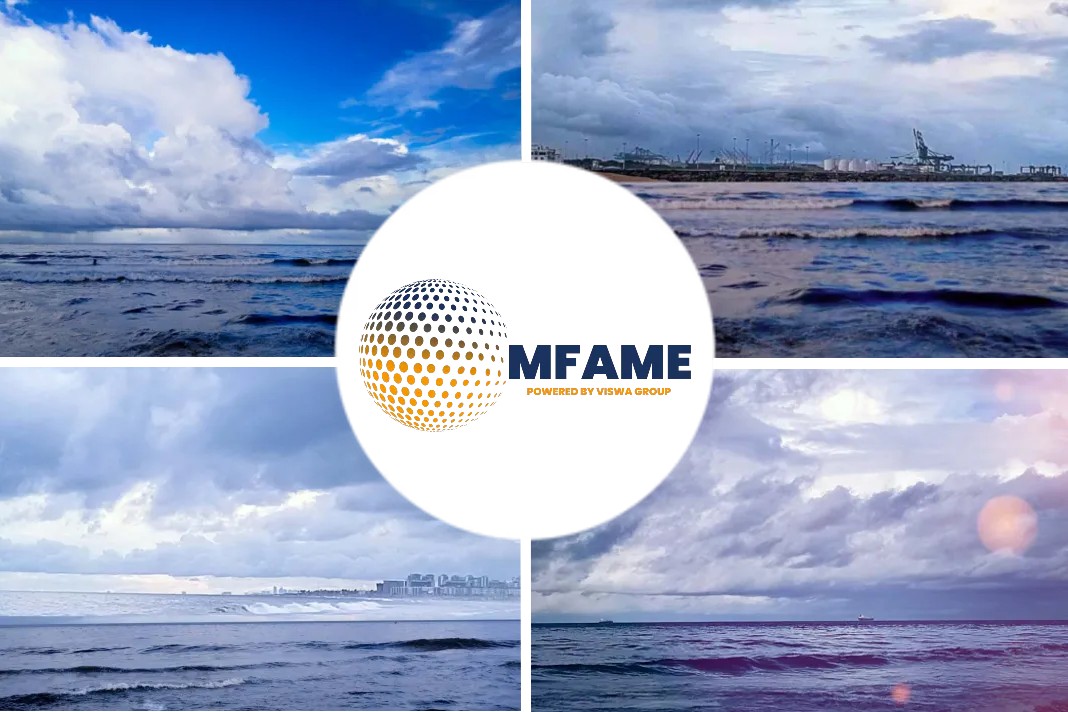Container ship accidents at sea should be considered the “oil spills of our time”, reports the Guardian quoting environmental organisations that found a toxic mix of metals, carcinogenic and other harmful chemicals on plastic washed up on Sri Lanka’s beaches after a cargo ship fire.
Sinking of X-Press Pearl
When the X-Press Pearl sank off nine nautical miles off Colombo, Sri Lanka’s capital, in May 2021, the most “significant harm” from the country’s worst maritime disaster initially came from the spillage of 1,680 tonnes of plastic pellets, or “nurdles”, into the Indian Ocean. They were found in dead dolphins, fish and on beaches – in some places 2 metres deep. A UN report called it the “single largest plastic spill” in history.
But a new study, from Sri Lanka’s Centre for Environmental Justice (CEJ) and the International Pollutants Elimination Network (IPEN), a coalition of NGOs in 124 countries, said the nurdle spill was the “tip of the iceberg” of environmental harm from the accident.
Researchers analysed samples of nurdles and burnt lumps of plastic from four Sri Lankan beaches for heavy metals and various chemicals, including benzotriazole UV-stabilisers, which are used to prevent discoloration in plastics, bisphenols and polyaromatic hydrocarbons (PAHs).
Endocrine disrupting metals
They found heavy metals as well as chemicals that both cause cancer and are “endocrine-disrupting”, or interfering with hormones. Of particular concern, they said, were levels of PAHs found on the burnt lumps, which far exceeded safe limits for consumer products set by the EU. For some substances, no level of exposure is considered safe.
Dr Therese Karlsson, a science adviser at IPEN and co-author of the study, said: “Until now, there hasn’t been any publicly available chemical analysis of the spill. The chemicals have largely been overlooked because they are not visible.”
Catastrophic spillage
While the nurdle spillage was “catastrophic”, Karlsson said, it was “the tip of the iceberg” due to the chemicals present – in particular BPA, which is used to make plastic and epoxy resins.
“We found bisphenol-A (BPA), which is a probable human carcinogen and has been linked to everything from depression, to respiratory disease, to breast and colon cancer,” she said. “It is also an endocrine disruptor.”
Of 1,486 containers carried on the vessel, 80 were classed as “dangerous goods” including caustic soda and nitric acid. The ship also carried epoxy resins, used in paints and primers, ethanol, and lead ingots, used to make vehicle batteries.
The study concluded that current legislation and practices are insufficient to mitigate the risk of poorly packaged chemicals on ships.
Did you subscribe to our daily Newsletter?
It’s Free! Click here to Subscribe
Source: The Guardian























Wow, marvelous weblog format! How long have you ever been blogging for?
you made running a blog look easy. The entire glance of
your web site is wonderful, as well as the content material!
You can see similar here ecommerce